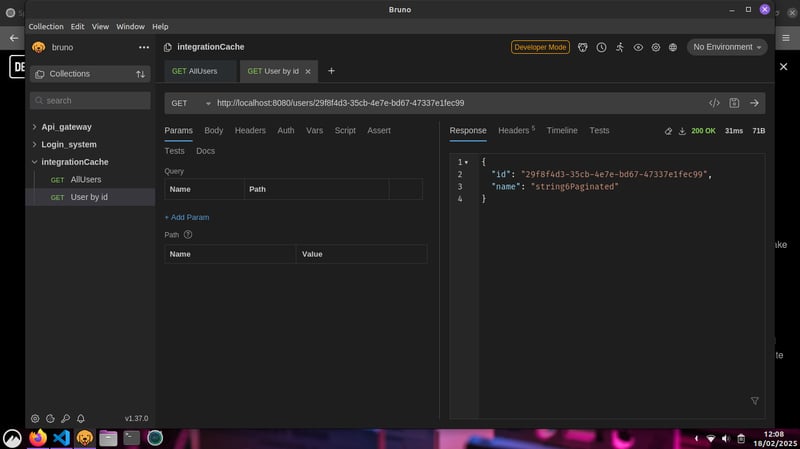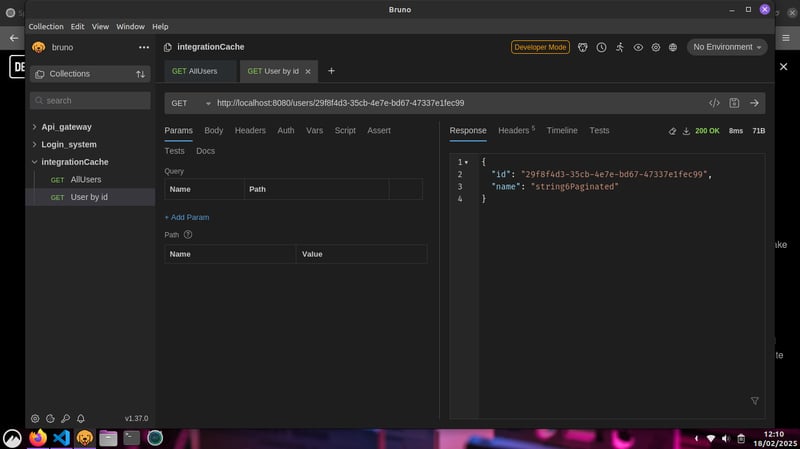Caching is an essential technique to improve the performance of applications by reducing database load and response time. In this post, we will explore how to integrate Redis as a caching layer in a Spring Boot application, running Redis inside a Docker container.
Why Use Redis for Caching?
Redis (Remote Dictionary Server) is an in-memory key-value store known for its high performance and scalability. It supports various data structures, persistence, and high availability, making it a great choice for caching in Spring Boot applications.
Setting Up Redis with Docker Compose
Update our docker-compose.yaml file with:
redis:
image: redis:latest
ports:
- "6379:6379"
volumes:
- example-redis-data:/var/lib/redis/data
volumes:
example-redis-data:
Adding Redis Cache to a Spring Boot Application
Step 1: Add Dependencies
In your pom.xml, add the necessary dependencies for Spring Boot caching and Redis:
<dependencies>
<dependency>
<groupId>org.springframework.boot</groupId>
<artifactId>spring-boot-starter-cache</artifactId>
</dependency>
<dependency>
<groupId>org.springframework.boot</groupId>
<artifactId>spring-boot-starter-data-redis</artifactId>
</dependency>
</dependencies>
Step 2: Create a cache configuration with Redis
Annotate your class configuration with @EnableCaching:
@Configuration
@EnableCaching
public class RedisCacheConfig {
@Bean
public CacheManager cacheManager(RedisConnectionFactory redisConnectionFactory) {
RedisCacheConfiguration cacheConfiguration = RedisCacheConfiguration.defaultCacheConfig()
.entryTtl(Duration.ofMinutes(10))
.serializeValuesWith(RedisSerializationContext.SerializationPair
.fromSerializer(new GenericJackson2JsonRedisSerializer()));
return RedisCacheManager.builder(redisConnectionFactory)
.cacheDefaults(cacheConfiguration)
.build();
}
@Bean
public SimpleKeyGenerator keyGenerator() {
return new SimpleKeyGenerator();
}
}
Explanation of the parameters:
- entryTtl(Duration.ofMinutes(10)) → Defines that every entry of the cache expires after 10 minutes.
- GenericJackson2JsonRedisSerializer() → Serializes the objects in a JSON format, granting the compatibility and readability of the data.
- SimpleKeyGenerator → Use the key automatically generated by Spring to identify the objects on cache.
Step 3: Configure Redis Connection
Add the following properties to your application.properties or application.yml file:
spring.redis.host=localhost
spring.redis.port=6379
Step 4: Implement Caching in a Service
Create a service class that caches data using the @Cacheable annotation:
import org.springframework.cache.annotation.Cacheable;
import org.springframework.stereotype.Service;
@Service
public class UserService {
private final UserRepository userRepository;
public UserService(UserRepository userRepository) {
this.userRepository = userRepository;
}
@Cacheable(value = "users", key = "#id")
public UserResponseDto findById(UUID id) {
var user = userRepository.findById(id).orElseThrow();
return new UserResponseDto(user.getId(), user.getName());
}
}
With caching enabled, the first request for a product ID will take time to process, but subsequent requests will return the cached value almost instantly.
Step 5: Test the Caching
- Grab a id from a user you stored in the database.
- With that id, you call the endpoint
users/{id from user}. - In my tests using Bruno, the call to the database, without the cache is responding in 31ms

- With the cache the response comes in 8ms.

Step 6: Remove Cache
If a user was deleted, we need to remove him from the cache to avoid outdated data.
import org.springframework.cache.annotation.Cacheable;
import org.springframework.stereotype.Service;
@Service
public class UserService {
private final UserRepository userRepository;
public UserService(UserRepository userRepository) {
this.userRepository = userRepository;
}
@Cacheable(value = "users", key = "#id")
public UserResponseDto findById(UUID id) {
var user = userRepository.findById(id).orElseThrow();
return new UserResponseDto(user.getId(), user.getName());
}
@Transactional
@CacheEvict(value = "users", key = "#id")
public void deleteById(UUID id) {
userRepository.deleteById(id);
}
}
Step 7: Refreshing Cache
If you want to guarantee that the cach will always be updated, even we a new user is created, you can use @CachePut.
import org.springframework.cache.annotation.Cacheable;
import org.springframework.stereotype.Service;
@Service
public class UserService {
private final UserRepository userRepository;
public UserService(UserRepository userRepository) {
this.userRepository = userRepository;
}
@Cacheable(value = "users", key = "#id")
public UserResponseDto findById(UUID id) {
var user = userRepository.findById(id).orElseThrow();
return new UserResponseDto(user.getId(), user.getName());
}
@Transactional
@CacheEvict(value = "users", key = "#id")
public void deleteById(UUID id) {
userRepository.deleteById(id);
}
@Transactional
@CachePut(value = "users", key = "#result.id")
public UserResponseDto save(CreateUserDto user) {
var newUser = new UserModel(user.name());
var userCreated = userRepository.save(newUser);
return new UserResponseDto(userCreated.getId(), userCreated.getName());
}
}
Conclusion
Integrating Redis as a caching layer in Spring Boot significantly improves application performance by reducing database calls. Running Redis in a Docker container makes it easy to set up and maintain. By using Spring Boot’s caching abstraction, we can seamlessly cache frequently accessed data and enhance the user experience.




@mspilari
Thanks Matheus for this crisp blog. I have few questions on this as follows